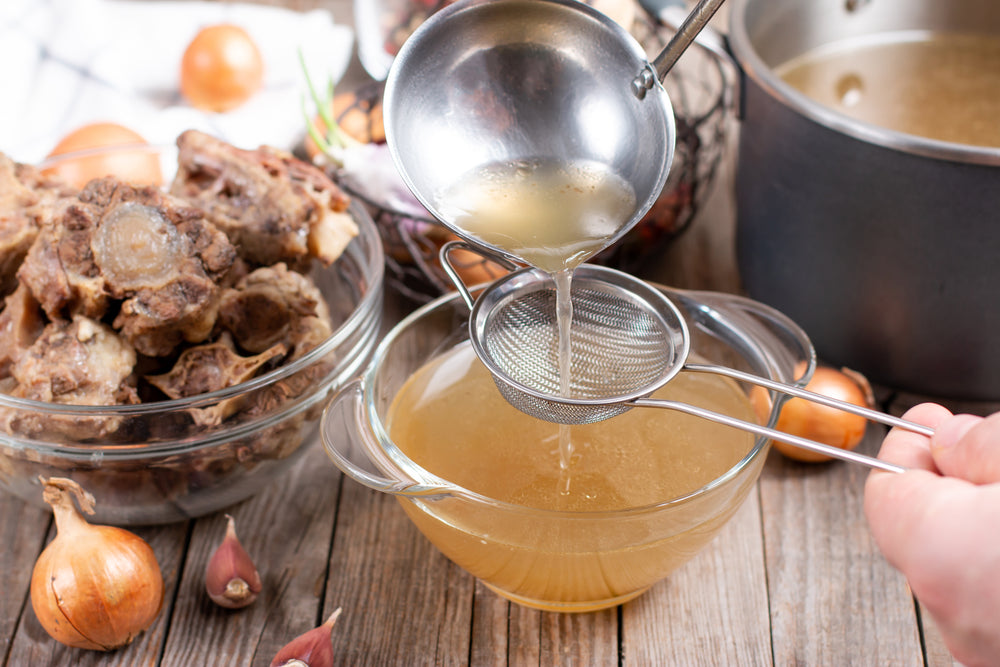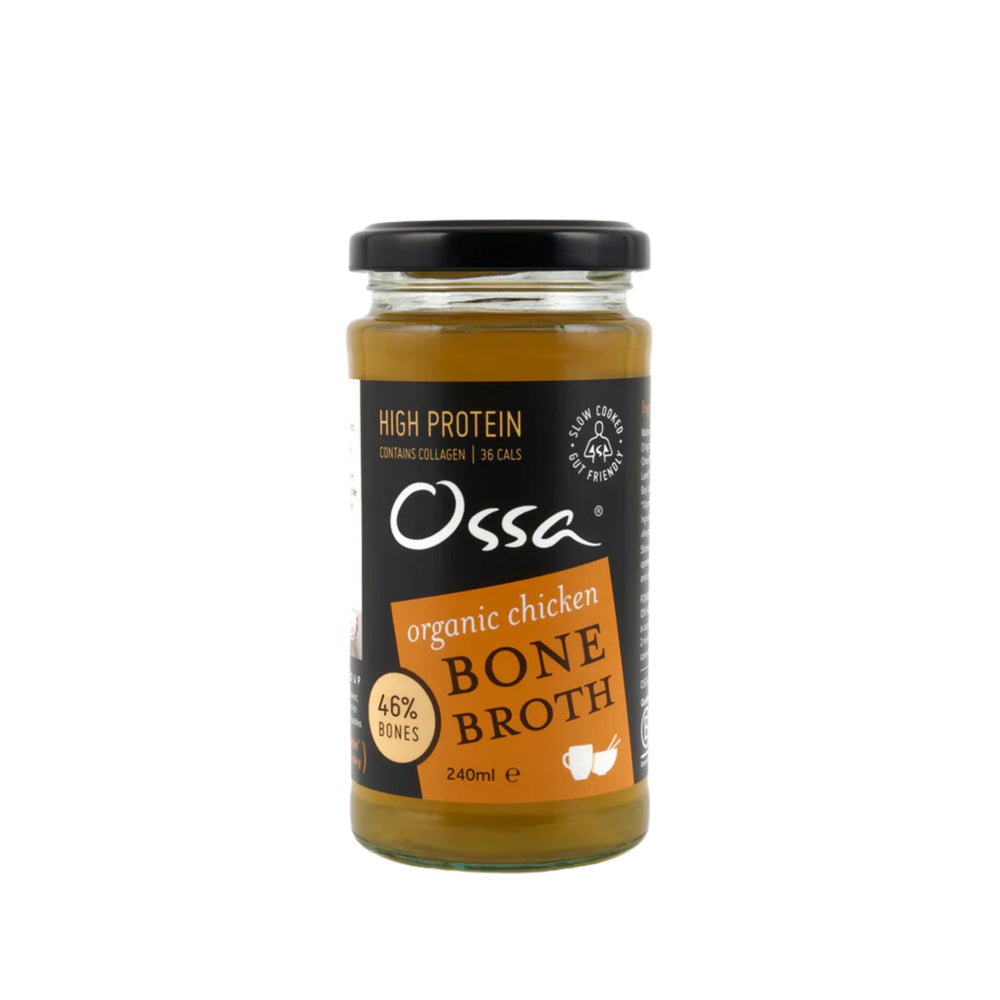
The Brilliance Of Bone Broth

The Brilliance Of Bone Broth
The Brilliance Of Bone Broth
Bone broth doesn’t sound like the tastiest health trend, but don’t be fooled; it’s got flavour and nutrition nailed. It’s made simply by simmering animal bones in water for hours, over which time dense minerals and vitamins release into the golden liquid. The resulting silky stock can be drunk as it is or used as a base for soups, risottos, and stews.
An elixir for health
A bone broth is made up primarily of, well, bones! Beef bone is a common choice; however, chicken, pork, and fish can also be used. Each gives a slightly different flavour and nutrient profile. Nutrients are gained from the bones themselves, the connective tissues, and the marrow inside.
Let’s start with the bones, which are rich in calcium, magnesium and phosphorous. Natural partners, these three nutrients help each other across the body. Magnesium aids the absorption of calcium, while phosphorous works with calcium to maintain our own bone health. These are slowly drawn from the bones into the broth as it simmers. Fishbones also release small amounts of iodine, which supports thyroid function and metabolism.
For the most potent nutritional broth, it’s essential to use joints that still have connective tissue. Natural compounds in the cartilage and tissue release collagen, a brilliant source of amino acids that literally help hold the body together and provide a whole host of other health benefits.
Then there’s the marrow, the spongy tissue inside the bones. It contains zinc, iron, vitamins A and K, fatty acids, selenium, boron, and manganese. Different bones vary in nutritional density, so buy the best you can afford. Organic, grass-fed animals will have healthier bones, passing that on to you. Joints, feet, or knuckles are best for broths and adding an acidic ingredient such as lemon or vinegar will increase nutrient extraction. Throw in other vegetables or herbs towards the end to enhance flavour and gain even more nutritional benefits.
Making bone broth is a slow process but well worth the result. Let’s see why.
Digestion and immunity
Bone broth itself is easy to digest, meaning its nutrients are easily absorbed into our bodies. It also contains lots of gelatine protein, created from cooked collagen. When this makes its way into the digestive tract, it joins forces with water to help other foods move smoothly through the intestines.
Easy digestion is one thing; studies have shown that consuming bone broth could also protect and heal the mucosal lining of the digestive tract and maintain intestinal wall function. Whilst good for everyone, this is particularly key for those suffering from irritable bowel syndrome (IBS) and inflammatory bowel diseases such as ulcerative colitis or Crohn’s disease.
Keeping the gut wall and lining strong has other benefits. Our digestive tract is primed not just for nutrient absorption; it’s also an important barrier for immunity. The guts are our first line of defence for protecting us internally. Keeping them healthy ensures the bad stuff is safely escorted out rather than hanging around.
Joint health
Collagen and gelatin play a big role here once again. Gelatin is rich in amino acids, which help our bodies build connective tissues such as tendons and ligaments. So, whether we’re still growing or using our adult bodies a lot, gelatin ensures our joints are well supported every step of the way.
Glucosamine and chondroitin are also common in bone broth. Naturally found in cartilage, studies show that topping up these compounds can lessen joint pain, stiffness, and the symptoms of osteoarthritis.
The ultimate beauty sleep
The amino acids strike again when it comes to getting forty winks. Glycine, often present in bone broth, has been linked with healthy sleep patterns, particularly helpful for those suffering from insomnia. It is believed to calm the brain, helping you fall asleep faster. Studies also show it can keep you asleep for longer by lowering the body’s core temperature.










